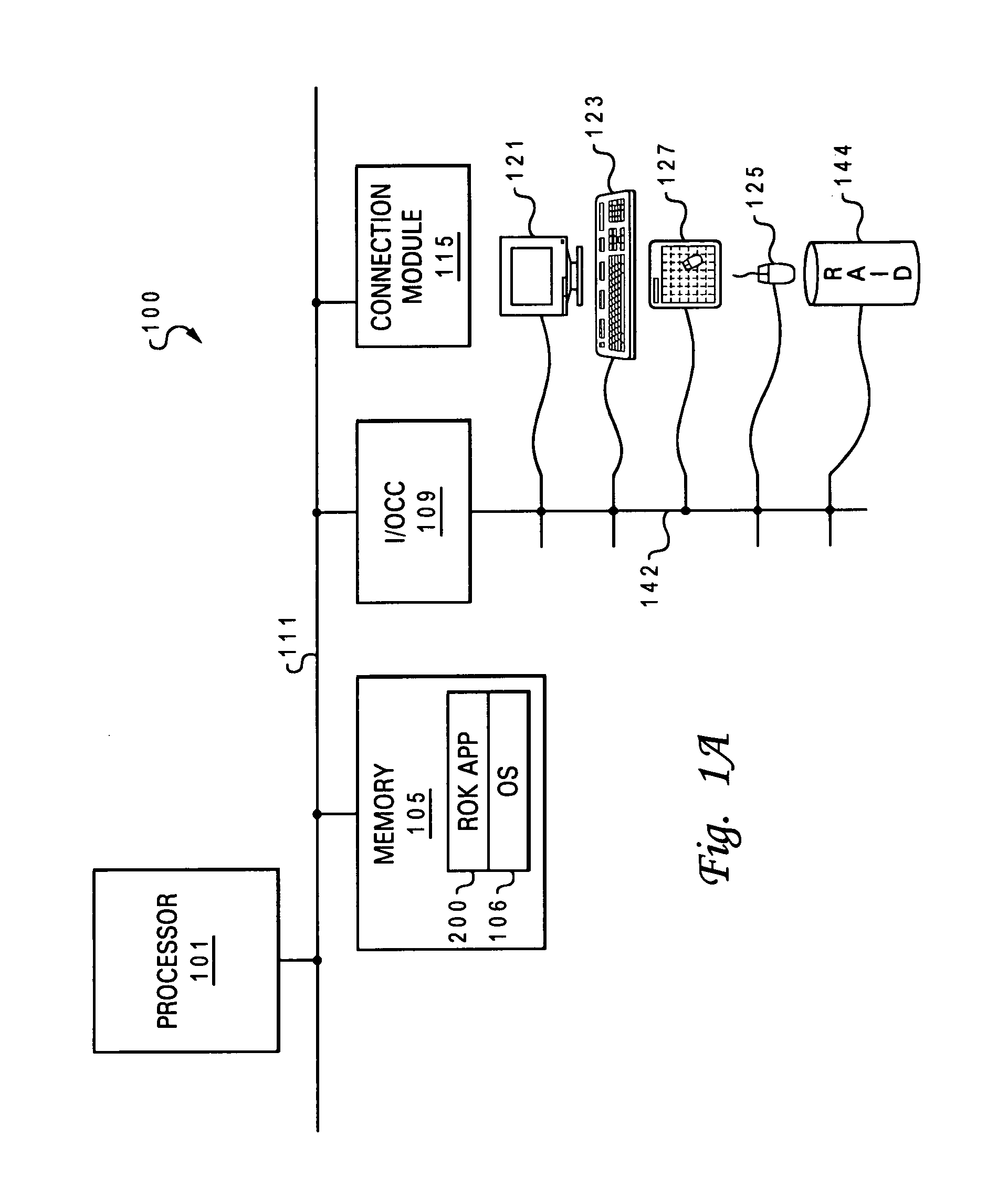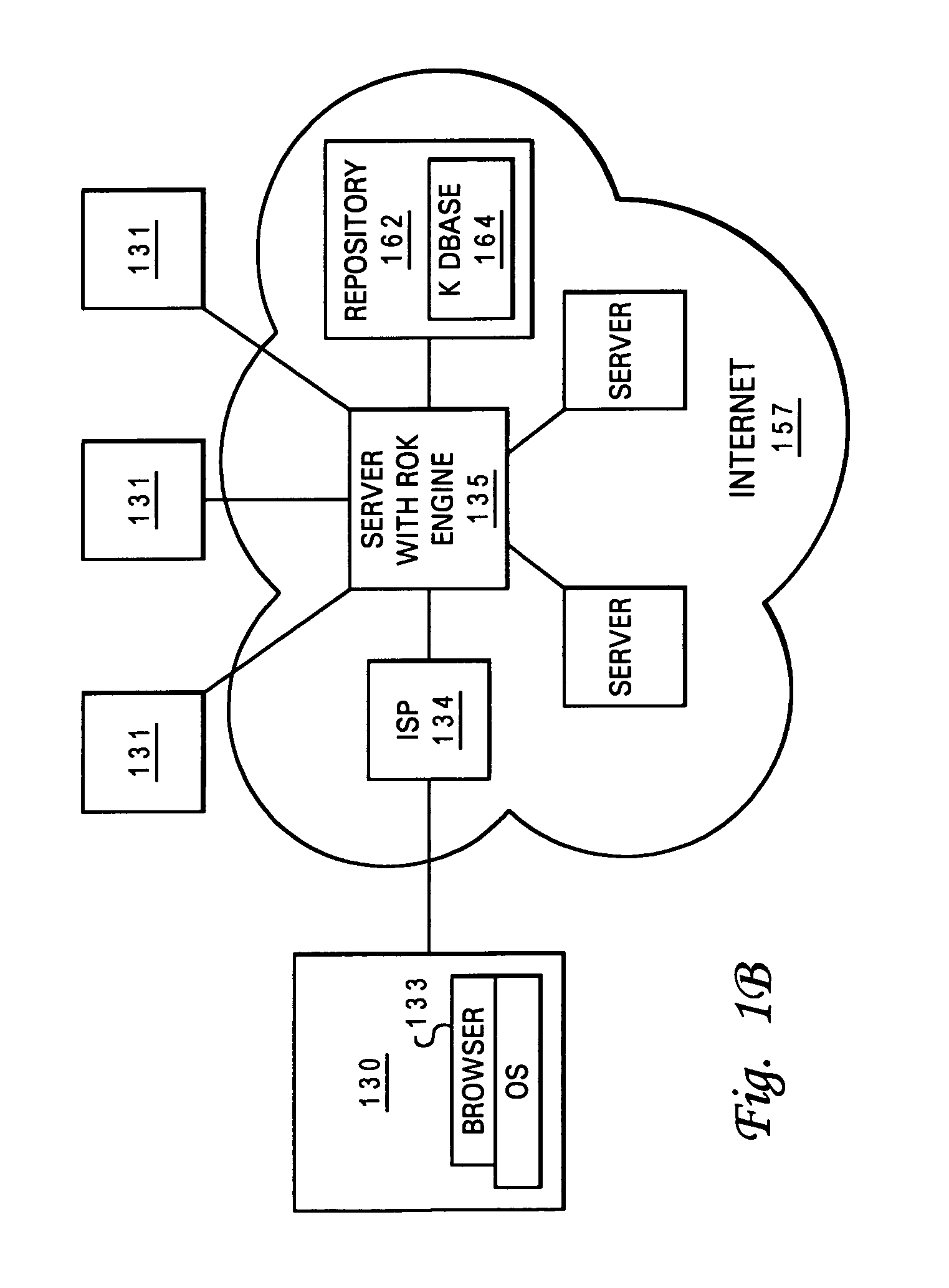Search engine facility with automated knowledge retrieval, generation and maintenance
a search engine and knowledge technology, applied in the field of search engines, can solve the problems of large search results, search engines are not always able to return items relevant to the specific context, and return a long list of search results containing noise documents,
- Summary
- Abstract
- Description
- Claims
- Application Information
AI Technical Summary
Problems solved by technology
Method used
Image
Examples
Embodiment Construction
[0033]The present invention introduces a software-implemented, user-enhanced and upgraded search engine referred to herein as a Return on Knowledge (ROK) engine. Specifically, the invention comprises two sequences of operations completed by a user interacting with the ROK engine (described in Sections I and II, respectively) and an automated maintenance operation performed on the database by the ROK engine (described in Section III).
[0034]The ROK engine includes user-interactive component(s) and a storage facility (referred to herein as a knowledge database or repository) within which data (i.e., search documents, articles, solutions / recipes, etc.) are maintained and constantly updated in response to the various user-interactions. A more detailed illustrative embodiment of ROK engine 200 is described below in reference to FIG. 2B. A very general description of the ROK engine with its main components is illustrated by FIG. 2A. As shown, ROK engine 200 comprises ROK search engine 230,...
PUM
 Login to View More
Login to View More Abstract
Description
Claims
Application Information
 Login to View More
Login to View More - R&D
- Intellectual Property
- Life Sciences
- Materials
- Tech Scout
- Unparalleled Data Quality
- Higher Quality Content
- 60% Fewer Hallucinations
Browse by: Latest US Patents, China's latest patents, Technical Efficacy Thesaurus, Application Domain, Technology Topic, Popular Technical Reports.
© 2025 PatSnap. All rights reserved.Legal|Privacy policy|Modern Slavery Act Transparency Statement|Sitemap|About US| Contact US: help@patsnap.com



